Ditapis dengan

Decommissioning of Nuclear Power Plants and Research Reactors | IAEA Safety S…
This Safety Guide addresses the subject of how to meet the requirements for decommissioning of nuclear power plants and research reactors. It provides guidance to national authorities and operating organizations on the planning and safe management of the decommissioning of such installations.
- Edisi
- WS-G-2.1
- ISBN/ISSN
- 92-0-102599-8
- Deskripsi Fisik
- 41p; 161kb
- Judul Seri
- -
- No. Panggil
- 621.483 IAE D
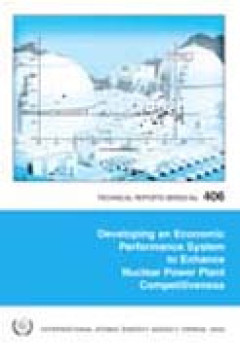
Developing an Economic Performance System to Enhance Nuclear Power Plant Comp…
This report discusses the means and principal issues for the development of a nuclear economic performance international system, with the purpose of enhancing nuclear power plant competitiveness. It addresses the major transformations occurring in the electricity generation industry to achieve operation and maintenance (O&M) cost reductions and is therefore primarily intended for nuclear power …
- Edisi
- 406
- ISBN/ISSN
- 92-0-110202-X
- Deskripsi Fisik
- 82p, 496kb
- Judul Seri
- -
- No. Panggil
- 621.483 IAE D

Master Curve Approach to Monitor Fracture Toughness of Reactor Pressure Vesse…
This publication provides information about the master curve approach for assessing the structural integrity of reactor pressure vessels (RPVs) under current and future operation and accident conditions in nuclear power plants (NPPs). This direct measurement of fracture toughness approach is technically superior to the correlative and indirect methods used in the past to assess irradiated RPV i…
- Edisi
- 1631
- ISBN/ISSN
- 978-92-0-111009-1
- Deskripsi Fisik
- 180p, 2,97MB
- Judul Seri
- -
- No. Panggil
- 621.483 IAE M
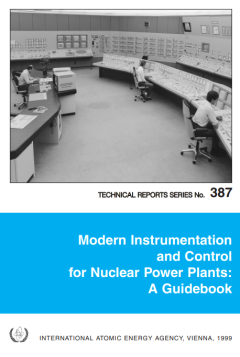
Modern Instrumentation and Control for Nuclear Power Plants | Technical Repor…
This report replaces Technical Reports Series No. 239, Nuclear Power Plant Instrumentation and Control: A Guidebook (1984), in particular by changing the emphasis from guidance to summarizing operating experience and discussing new technologies. It provides an up to date overview of nuclear power plant instrumentation and control technology and the background against which such systems are impl…
- Edisi
- 387
- ISBN/ISSN
- 92-0-101199-7
- Deskripsi Fisik
- 629p,
- Judul Seri
- -
- No. Panggil
- 621.483 IAE M
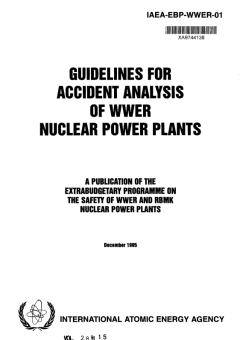
Guidelines for accident analysis of WWER nuclear power plants
The need for detailed guidance in the performance and review of accident analysis for WWER nuclear power plants has been identified as a priority within the IAEA Extrabudgetary Programme on Safety of WWER and RBMK NPPs. The present guidelines were developed through the organization of three consultants meetings in 1994 and 1995. The guidelines deal with the transient and accident analysis re…
- Edisi
- -
- ISBN/ISSN
- -
- Deskripsi Fisik
- 136p
- Judul Seri
- -
- No. Panggil
- 621.4835 IAE G

Optimized Nuclear Plan: Feasibility Study For The First Nuclear Power Plant I…
- Edisi
- Vol.1
- ISBN/ISSN
- -
- Deskripsi Fisik
- 87 hal, 24 cm
- Judul Seri
- -
- No. Panggil
- 621.483 BAT O
- Edisi
- Vol.1
- ISBN/ISSN
- -
- Deskripsi Fisik
- 87 hal, 24 cm
- Judul Seri
- -
- No. Panggil
- 621.483 BAT O
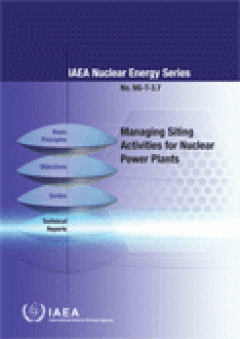
Managing Siting Activities for Nuclear Power Plants | IAEA Nuclear Energy Ser…
The NG-T-3.7 nuclear energy series collection is a collection that discusses Managing Siting Activities for Nuclear Power Plants (NPP). The subject matter in this standard is divided into 6 chapters covering introduction, nuclear power program framework, management of siting activities, criteria for selecting and assessing NPP sites, methodology, and stakeholder involvement. This collection was…
- Edisi
- -
- ISBN/ISSN
- 978-92-0-131610-3
- Deskripsi Fisik
- 59 pages
- Judul Seri
- IAEA Nuclear Energy Series NG-T-3.7
- No. Panggil
- -
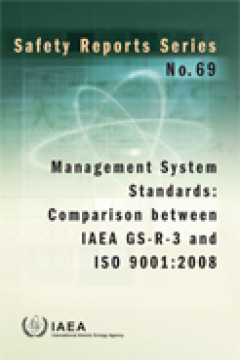
Management System Standards: Comparison between IAEA GS-R-3 and ISO 9001:2008…
This collection is a special collection of safety report series number 69. Published by IAEA in 2012. This collection is about comparison between IAEA GS-R-3 And ISO 9001:2008. Some of the topics discussed include a review of the two standards to their differences and correlations. Also equipped with a comparison table of the two in accordance with the contents of the two standards (MM). Key…
- Edisi
- -
- ISBN/ISSN
- 978-92-0-120710-4
- Deskripsi Fisik
- 55 pages
- Judul Seri
- Safety Reports Series 69
- No. Panggil
- -
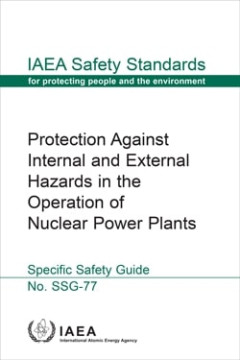
Protection Against Internal and External Hazards in the Operation of Nuclear …
This Safety Guide provides specific recommendations on protection against internal and external hazards in the operation of nuclear power plants. It provides new or updated recommendations derived from enhanced understanding of operational aspects of hazards and combinations of hazards. Operating experience gained from incidents and accidents in nuclear power plants around the world has demonst…
- Edisi
- -
- ISBN/ISSN
- 978–92–0–101522–8 (pdf)
- Deskripsi Fisik
- 83 p
- Judul Seri
- IAEA safety standards series
- No. Panggil
- 621.039.58 IAE p
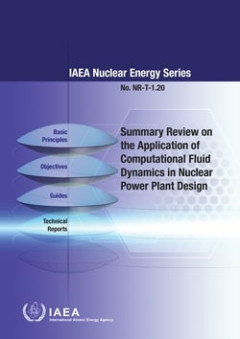
Summary Review on the Application of Computational Fluid Dynamics in Nuclear …
The IAEA’s statutory role is to “seek to accelerate and enlarge the contribution of atomic energy to peace, health and prosperity throughout the world”. Among other functions, the IAEA is authorized to “foster the exchange of scientific and technical information on peaceful uses of atomic energy”. One way this is achieved is through a range of technical publications including the IAEA…
- Edisi
- -
- ISBN/ISSN
- 978–92–0–100321–8
- Deskripsi Fisik
- 80 p
- Judul Seri
- IAEA nuclear energy series
- No. Panggil
- 621.039.5:532 IAE s
 Karya Umum
Karya Umum  Filsafat
Filsafat  Agama
Agama  Ilmu-ilmu Sosial
Ilmu-ilmu Sosial  Bahasa
Bahasa  Ilmu-ilmu Murni
Ilmu-ilmu Murni  Ilmu-ilmu Terapan
Ilmu-ilmu Terapan  Kesenian, Hiburan, dan Olahraga
Kesenian, Hiburan, dan Olahraga  Kesusastraan
Kesusastraan  Geografi dan Sejarah
Geografi dan Sejarah